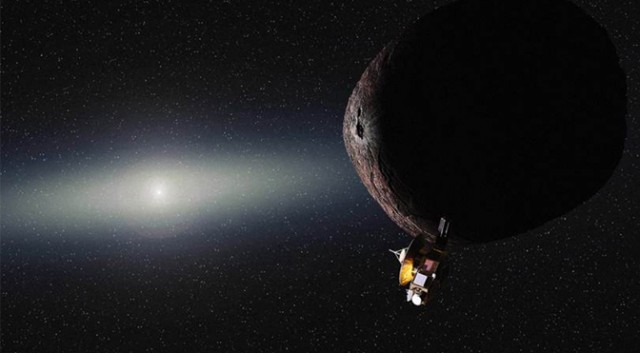
NASA launched the New Horizons probe to visit Pluto, and it became the first-ever spacecraft to do that several years ago. With that phase of the mission complete, what was a deep space robot to do? NASA decided to keep New Horizons going and take a look at objects in the Kuiper Belt, and the probe has just awoken from a long slumber to prepare for its next flyby.
The Kuiper Belt is a ring of icy objects out past the orbit of Neptune. After being a planet for decades, scientists realized Pluto was just a large Kuiper Belt object and downgraded it to a dwarf planet. The New Horizons mission marked the first time humanity had ever seen such a distant object up close, but the probe is going to break its own record early next year.
New Horizons is perfect for studying other Kuiper Belt objects for several reasons. For one, it’s already out there. It takes years for a spacecraft to reach the outer solar system — New Horizons launched from Earth back when Pluto was still a planet. In addition, its Pluto mission was just a flyby. It would have taken too much fuel to slow the probe down so it could enter orbit of Pluto, so the entire data-gathering phase was just a few hours long. With the spacecraft still perfectly capable of doing science after that, it was an easy choice to keep the probe alive for a Kuiper Belt mission.
According to NASA’s Alan Stern, New Horizons has successfully woken up from hibernation. The probe went into hibernation in late 2017; all main systems powered down, and the computer only sent periodic status updates to Earth. NASA previously confirmed the probe was operational from these signals, but now it’s fully back online. The power-up process went flawlessly, and all systems are functional.
NASA didn’t know enough about smaller Kuiper Belt objects when New Horizons launched to plan this phase of the mission in advance, but we’ve since learned about several possible targets. The agency settled on MU69, sometimes called Ultima Thule. This object is either one or two chunks of ice and rock around 20 miles (32 km) in diameter. The team will begin preparations for its MU69 approach soon.
Ultima Thule is 1 billion miles (1.6 billion km) past Pluto, which itself is 3 billion miles from Earth. This makes it the most distant object ever visited by an Earth spacecraft. New Horizons will capture high-resolution images of Ultima Thule, which will allow scientists to learn about the composition of these smaller Kuiper Belt objects. The flyby is scheduled for January 2019.























